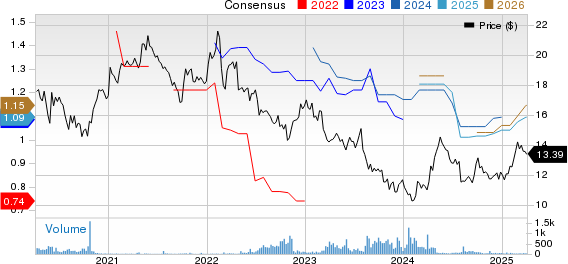Cocoa Prices Surge Amid Weak Harvest and Demand Concerns
May ICE NY cocoa (CCK25) closed Wednesday up +791 (+9.67%), while May ICE London cocoa #7 (CAK25) rose +469 (+7.44%). These increases mark a significant surge, with cocoa prices reaching one-month highs, driven by indications of a weak mid-crop cocoa harvest in West Africa. Rabobank reports that late-arriving rains have restricted crop growth, and recent surveys of cocoa farmers in Ivory Coast and Ghana have shown disappointing results.
Commodity Bulletin: This FREE newsletter is designed for both industry professionals and beginners alike.
Worries regarding the upcoming mid-crop in Ivory Coast are pushing cocoa prices higher as it typically marks the smaller of the two annual cocoa harvests beginning this month. The average estimate for this year’s Ivory Coast mid-crop stands at 400,000 MT, which reflects a decline of -9% from last year’s harvest of 440,000 MT.
Additionally, a slowdown in cocoa exports from the Ivory Coast has contributed to rising prices. Government data released on Tuesday indicated that farmers shipped 1.44 MMT of cocoa from October 1 to March 30 this marketing year, marking an increase of +11% from the previous year. However, this is a decrease compared to the impressive 35% rise reported in December.
Trends from the past several weeks show that cocoa prices have been under pressure, reaching 4-1/2 month lows on March 21 due to an improving supply outlook. On February 28, the International Cocoa Organization (ICCO) projected a global cocoa surplus of 142,000 MT for the 2024/25 season, which indicates the first surplus in four years. The ICCO also estimated a +7.8% year-on-year increase in global cocoa production to 4.84 MMT.
The recovery of cocoa inventories is another bearish factor for prices. After dropping to a 21-year low of 1,263,493 bags on January 24, ICE-monitored cocoa inventories in US ports have rebounded, reaching a 5-1/4 month high of 1,855,268 bags by Tuesday.
Concerns regarding demand continue to exert downward pressure on cocoa prices. Chocolate manufacturers like Hershey and Mondelez have stated that elevated cocoa prices are dampening consumer demand. Mondelez CFO Zarmella noted on February 4 that they are observing a slowdown in chocolate demand, particularly in North America, where cocoa consumption is declining. Furthermore, the company warned on February 18 that chocolate prices could surge by up to 50% due to rising cocoa prices, potentially limiting demand. Hershey executives also highlighted on February 6 that high cocoa costs are compelling them to reformulate products by substituting cocoa with other ingredients.
On the other hand, a report from Nigeria on February 27 indicated that cocoa exports for January increased by +27% year-on-year to 46,970 MT, showcasing Nigeria’s status as the world’s fifth-largest cocoa producer.
The high prices have noticeably affected cocoa demand during Q4, as reflected in grinding reports. The European Cocoa Association reported that European cocoa grindings fell -5.3% year-on-year to 331,853 MT, marking the lowest performance in over four years. Likewise, the Cocoa Association of Asia reported a -0.5% decline in Q4 cocoa grindings compared to the previous year, also the lowest in four years. The National Confectioners Association noted a -1.2% decrease in Q4 North American cocoa bean grindings, down to 102,761 MT.
Smaller cocoa supplies from Ghana, the second-largest cocoa producer globally, are providing some support for prices. Cocobod, Ghana’s cocoa regulator, revised its forecast for the 2024/25 cocoa harvest downward in December for the second time this season, now estimating 617,500 MT—a reduction of -5% from an earlier projection of 650,000 MT.
The ICCO reported on February 28 that the 2023/24 global cocoa deficit reached -441,000 MT, the most significant deficit in over 60 years. According to their findings, cocoa production for 2023/24 fell -13.1% year-on-year to 4.380 MMT. The ICCO also revealed that the 2023/24 global cocoa stocks/grindings ratio has dropped to 27.0%, the lowest recorded in 46 years.
On the date of publication, Rich Asplund did not possess (either directly or indirectly) any positions in the securities mentioned in this article. All information and data in this article is intended solely for informational purposes. For more details, please refer to the Barchart Disclosure Policy here.
More news from Barchart
The views and opinions expressed herein are those of the author and do not necessarily reflect those of Nasdaq, Inc.

